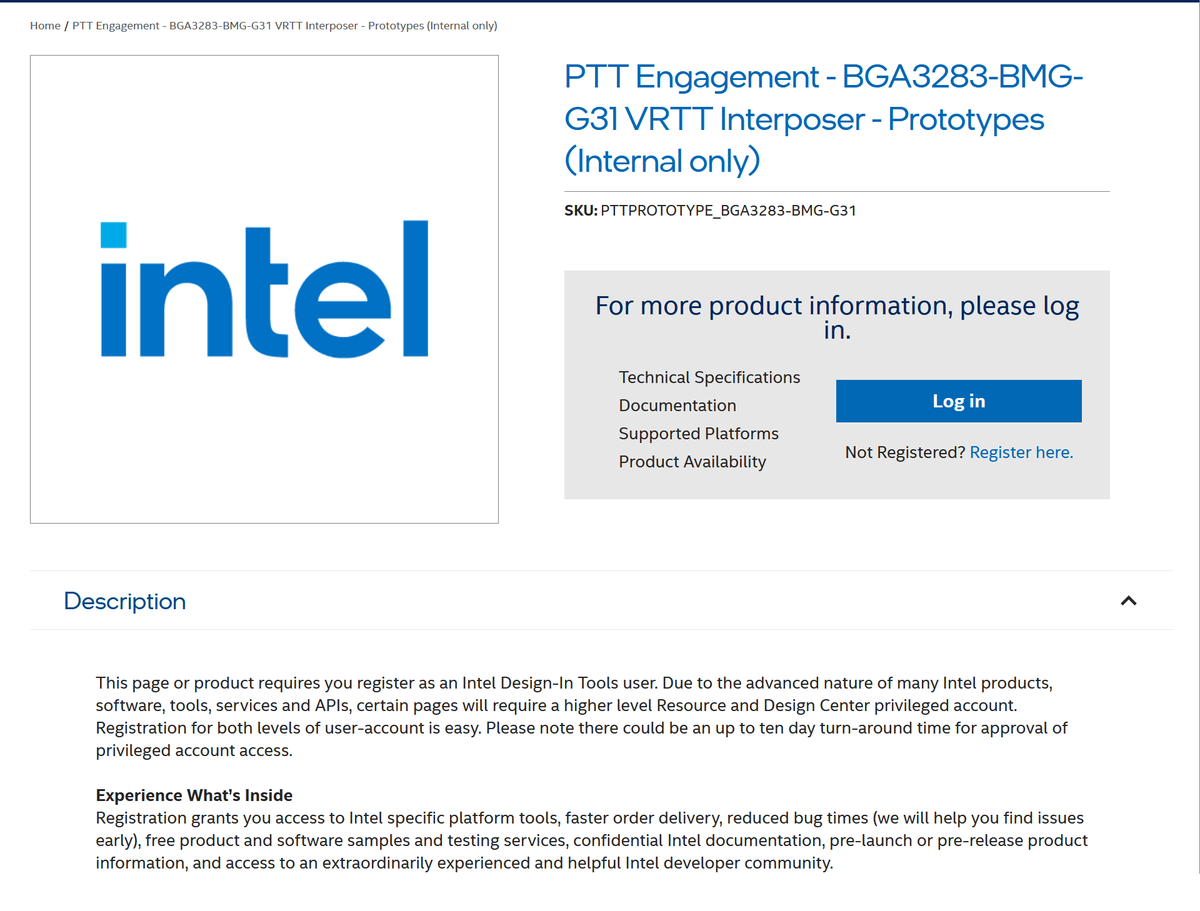This is a significant development positioned within Intel's upcoming Battlemage discrete GPU lineup. While leaks about Intel's G10 and G21 GPU dies have circulated before, the G31 die is making its debut.
The webpage (which has now been pulled), provides technical specifications for VRTT interposer prototypes related to the BMG-G31 die. However, these specific specs are restricted to individuals with the appropriate credentials.

Drawing parallels with Intel's Arc Alchemist GPUs, the G31 die is likely to serve as the entry-level option for Intel's Battlemage GPUs. These GPUs encompass gaming, mobile, and workstation variants. Following the Arc A-series pattern, where the top die corresponds to the smallest number, the G31 silicon could potentially house 32 Xe2 cores.
The appearance of a third die raises intriguing questions. It is unclear if Intel will move into high-end gaming GPU territor. Uncertainty prevails. There's no evidence that Intel aims to compete directly with the next-gen RTX 5090 or even the RTX 5080. Yet, the emergence of this third GPU die adds an interesting twist to the Battlemage saga.
Realistically, Intel seems to be targeting the entry-level and mid-range markets with all three Battlemage dies:
- G31 : A potential super low-end die, possibly exclusive to mobile devices.
- G10 and G21 : Likely aimed at entry-level desktop and mid-range markets.
Battlemage is slated to arrive either late this year or early 2025. Both the G10 and G21 silicon are already in the pre-qualification phase, undergoing functionality and reliability testing. The same holds for the G31 die.
Under the hood, the architecture has undergone significant tweaks compared to Arc Alchemist. In its integrated GPU (iGPU) form, Battlemage boasts a 1.5x performance improvement over Meteor Lake's Arc Alchemist chips. This leap is attributed to next-gen Xe2 cores, larger XMX AI engines, enhanced vector engines, improved ray tracing capabilities, and expanded caches.




